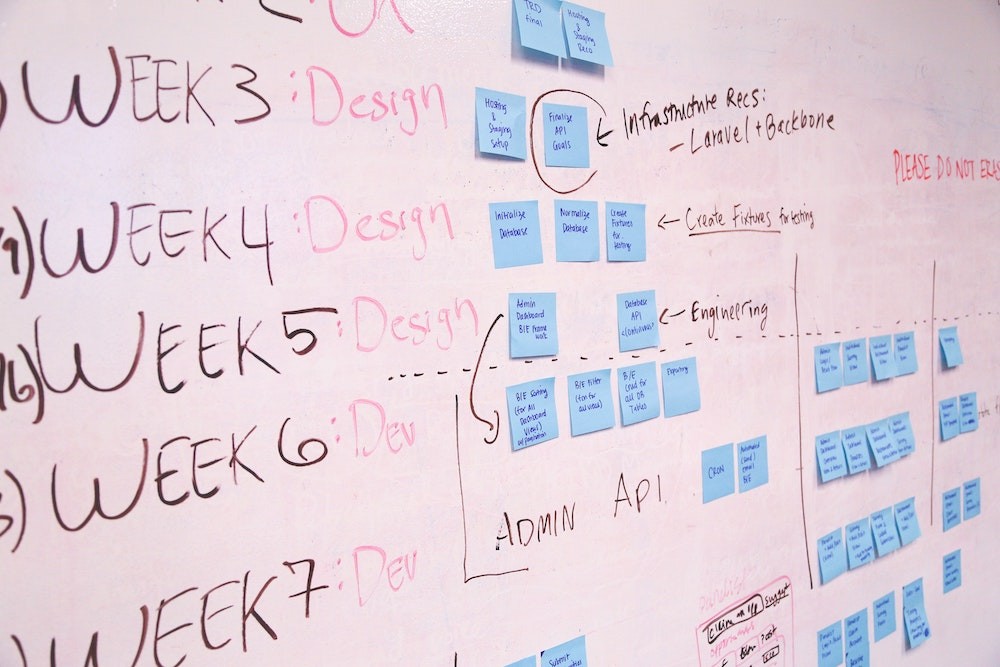
Organizations need partners that can easily adapt to change–here are some ways that we embrace agility in our marketing agency.
The last couple of years have seen a lot of shifts for all of us.
COVID hit, the world shut down, and millions of office workers made space for laptops at their kitchen tables while simultaneously trying to remember enough fourth-grade math to help their suddenly homeschooling kids (fun times, right?).
We’ve been through some changes, too – in 2020, my husband and business partner Jeff and I very amicably ended our 16-year marriage, and have come out the other side as great coparents, friends, and stronger business partners than ever.
My point is, change happens, and you need to roll with it and adapt to the circumstances you find yourself in.
That’s true in life – but it’s also true in business. And that’s why we’ve spent time focusing on positioning ourselves as an agile marketing agency that can easily adapt to our clients’ needs, no matter how they may shift over time.
Having launched our business more than 15 years ago, we’ve seen the landscape change tremendously in that time, with thousands of marketing trends coming and going – the businesses that remain competitive are the ones who stay ahead of the curve and adapt to what’s coming, rather than yearning for the good old days.
And they need marketing partners that are able to strategize with them and help them adapt their goals and expectations based on changing circumstances.
Businesses that might have once gone all in on an ambitious two-year marketing campaign are realizing that many of the ideas in that campaign are obsolete the moment they’re announced. Instead, they’re finding more success in choosing smaller, specialized teams that can adapt to their changing vision and optimize their strategy based on how it’s performing.
Here are a few of the ways we’ve embraced an agile marketing strategy at Eucalypt.
We understand the benefits of offering “packages” – it’s helpful to know exactly what you’re going to get. Let’s say every month, you want six blog posts and one ebook to help you promote your SaaS startup.
But then what if you make a pivot, and need to revamp all of your web copy to reflect your new messaging, even though all of the blog topics are geared around your previous messaging? You’re stuck paying for content that’s no longer relevant to your needs, and you’ll need to budget more on top of that for support with new web copy.
Our model makes it easy to embrace pivots.
With Eucalypt, you can buy a content retainer package where you have a fixed monthly budget – but instead of attaching firm deliverables to that budget, we offer “credits” instead.
For example, let’s say you buy a 400 credit a month package.
If you don’t have a dedicated content strategy in place, we may spend the first month on strategy development, mapping out how we’ll plan to use the 400 credits in each following month.
Under our plan, we might allocate the credits towards a mix of blog content, social content, email marketing, hourly consulting, and lead-gen content like ebooks and white papers, based on your goals at the time and the research that we conduct.
But then you bring in a new CMO who wants to make changes to your overall positioning and messaging strategy – and the associated content strategy doesn’t work for what she wants anymore.
With an agile, credit-based package, you can easily halt production and shift the remaining credits to where they’re most needed. If you need to invest the budget into new stakeholder discovery interviews and messaging documents, followed by a web copy revamp, no worries. As long as our team doesn’t have work in progress already (which you can track on our project management dashboard), we can easily swap out assigned work for more urgent replacements.
And if you don’t need the same amount of work each month, that’s OK too. Our model allows for up to 25% of last month’s credits to “roll over” into the following month. Need more support than you’re budgeting for in a certain month? You can purchase up to 50% of your credit package in overage each month. Or, if you have some use-it-or-lose-it budget to deal with, you can buy credits now, and work out how to use them later.
The credit retainer system enables us to have a relatively accurate sense of our team’s workflow, so that we can plan our bandwidth accordingly – but it also allows room for shifts in priorities in a way that most larger agencies can’t match.
Eucalypt started out with Jeff and I as the only employees – and eventually, we grew the business enough that we needed extra support.
For a few years, we brought on employees, having anywhere up to 5 part- and full-time staff at once. And while we found some exceptionally talented people to work for us, we eventually realized that the model didn’t work well for us.
Project needs can fluctuate dramatically over the course of a year, and we were asking people to wear too many different hats. Employees would need to shift gears from project management to PR to writing to social media to design QA all in the space of a day. Rather than having the room to focus on what they do best, they’d sometimes end up getting flustered by trying to track too many different things at once, making it harder for them to deliver their best work.
And, because we’re a marketing agency that focuses heavily on specialized, B2B topics, even though we had great writers on our team, they didn’t always have the right experience for the clients we were bringing on. That meant instead of bringing on industry specialists, we’d need to get our writers up to speed fast on areas they weren’t familiar with.
Ultimately, even though we enjoyed having a team of our own, by the time we decided to transition the business out of Maine, all of our employees had found other work and we decided to shift to a consultancy-based model.
Since then, we’ve deliberately kept our client base small enough that Jeff and I can personally oversee all work being performed, rather than pass clients off to account managers. That keeps us invested in our clients’ success, and accountable for our results.
As things stand now, we have an all-remote workforce of specialists – many of whom we’ve worked with for a decade or longer. We pay them considerably more than we’d pay staff members, but we seek out each one of them for the specialized expertise that they can bring to the project, knowing that they’ll deliver on that value.
This allows us the agility to bring on the exact right match for each project, including writers, editors, designers, PR strategists, and other roles – with experience in everything from ecommerce tech to engineering to biotech, just to name a few.
If we’re pitching for a project in an industry that’s newer to us, we put our own resources into curating talent from our network and beyond – enabling us to serve as a recruiting firm when needed, so that we can find the most qualified people to bring on to a project.
We also build strategic partnerships with other small agencies with their own specializations, including photography, videography, PPC advertising, and website development. By doing this, we let each agency “own” their own relationship with the end client, with no markup, but we can still collaborate openly and work together to achieve an end goal.
We think we’re pretty good at designing marketing strategies – but know that we can always be better.
By continually analyzing the data at our disposal and looking at how it’s meeting our goals, we’ll work with our clients to optimize our strategy, making strategic recommendations or designing small experiments that we think can help improve your outcomes.
Whether that means doing some A/B testing across an email campaign, trialing longform blog posts instead of the shorter pieces you’ve been producing, or exploring guest blog opportunities on third party platforms, we’ll look for opportunities to test out new initiatives and see how well they land with your audience, measuring key metrics like audience engagement, backlinks, pageviews, and social shares, as well as conversion data.
We’ll share our reporting with you in regular meetings, and take in your feedback and insights to continually improve our strategy.
A good marketing strategy isn’t set in stone; it’s continually evolving, much like your organization is. By taking a holistic look at all of your marketing data, as well as exploring real-time trends in your industry, we can continually collaborate with you on new ideas to help your business grow.
Ultimately, we think embracing agility enables us to be a more responsive and flexible agency. While we work with our clients in collaboration on a shared vision, our agility enables us to recalibrate if that vision changes, and to use continuous innovation to get closer to your end goals.
If agility is what you’re looking for in a marketing partnership, we’d love to hear from you.
Ready to build an AI-optimized content strategy with expert support? Get in touch for a quote.

Learn why HARO, PR campaigns, guest blogging, research reports, expert round-ups, and infographics are some of our favorite strategies for building backlinks—and why “pay to play” backlink strategies often backfire.

Signing up for a content marketing retainer package offers plenty of advantages over per-project pricing. Here are a few reasons why.

For tech startups in Florida, these venture capital firms offer the best sources of capital and operational support in the region.